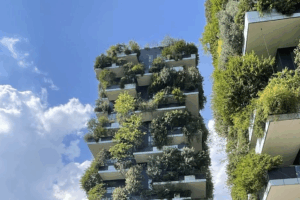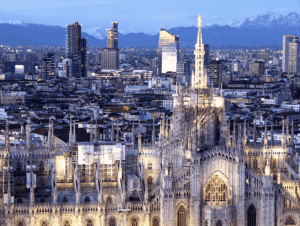The legendary 1902 skyscraper’s transformation into 38 exclusive apartments rewrites New York’s luxury real estate playbook
Imagine owning an address that defines an entire city. Not just living near an iconic landmark, but within it. That’s the unprecedented proposition now available to ultra-high-net-worth buyers at the Flatiron Building, where Manhattan’s most photographed structure has been reimagined as one of its most exclusive residential addresses.
The 22-story Beaux-Arts masterpiece, designed by architect Daniel Burnham in 1902 as the Fuller Company’s headquarters, commands the triangular intersection of Fifth Avenue, Broadway, and 23rd Street with the same gravitational pull it has exerted for 123 years. Now, for the first time, its distinctive wedge-shaped silhouette houses private residences—and they’re priced accordingly.
The Economics of Iconography
Entry into this rarefied club starts at just under $12 million for a three-bedroom unit spanning approximately 3,000 square feet. At the apex, full-floor residences and a spectacular duplex penthouse command $50 million each, according to reports from the Financial Times and digital publication VNY-La Voce di New York.
The conversion encompasses 38 apartments, typically configured as two units per floor, with select full-floor residences reserved for those seeking maximum exclusivity. The aggregate value of these residences approaches $375 million—a figure that reflects not merely square footage, but the intangible premium of inhabiting architectural history.
Among the crown jewels: a penthouse boasting over 6,600 square feet of outdoor terrace space, offering what may be the most commanding 360-degree views of Manhattan’s ever-evolving skyline. Here, the cityscape becomes your private theater, visible from a stage that has anchored New York’s visual identity for more than a century.
Why the Premium Makes Sense
As architect and historian Robert A.M. Stern observes, “‘Iconic’ is an overused word today, but here it’s entirely appropriate. This building defines the pivot point between Downtown and Uptown Manhattan. And in its context, it appears exactly as it did more than a century ago.”
That permanence carries measurable value in a market increasingly dominated by glass towers that may define this decade but will blend into the next. The Flatiron’s cultural permanence offers something algorithmic models struggle to quantify: guaranteed relevance across generations.
The building’s slender floor plates—once a constraint for commercial tenants—prove ideal for residential conversion. Unlike contemporary super-tall towers with cavernous floor plans and windowless interior rooms, every Flatiron residence benefits from abundant natural light and unobstructed views. The narrow triangular configuration eliminates the claustrophobic core spaces that plague even the most prestigious new developments.
“Nothing here is economical,” the Financial Times notes pragmatically, “but the slender floor plan ensures windows and views in abundance, without that sense of claustrophobia found in new construction skyscrapers with their massive floor plates and dark centers.”
An Italian Connection
The project carries a distinctly transatlantic pedigree. Since 2009, the majority of the building has been owned by real estate funds managed by Sorgente Group SpA, an Italian holding company with interests spanning real estate, finance, infrastructure, and publishing. The conversion represents both a preservation triumph and a calculated bet on New York’s enduring appeal to global capital.
For Italian investors and collectors already familiar with Sorgente’s portfolio—which includes numerous architectural landmarks—the Flatiron residences offer a tangible piece of New York iconography with the backing of a known entity in international real estate.
The First Wave
The initial market release includes 18 apartments, with the three-bedroom entry point priced at $11 million and the 7,400-square-foot duplex penthouse anchoring the top at $50 million. This strategic rollout allows the development team to gauge market appetite while maintaining pricing discipline—a crucial consideration given the building’s finite inventory and irreplaceable character.
The remaining 20 units will likely benefit from any momentum generated by early sales, particularly if notable buyers emerge. In Manhattan’s luxury market, neighbor prestige often justifies premium pricing.
Investment Thesis Beyond Shelter
For qualified buyers, these residences represent more than real estate—they’re collectible assets with cultural significance rivaling blue-chip art. The Flatiron Building appears in countless photographs, films, and artworks. It has defined “New York” visually for generations worldwide, particularly among European and Asian audiences whose mental image of Manhattan crystallizes around a handful of structures.
This universal recognition creates a liquidity premium. Future resales won’t require explaining location or building pedigree—the address itself carries instant, global brand recognition that transcends typical real estate marketing.
Moreover, the conversion preserves exterior integrity while delivering contemporary interior appointments, satisfying both preservationists and luxury buyers seeking modern amenities. This balance—increasingly rare in landmark conversions—positions the property for long-term value retention.
The Broader Context
The Flatiron conversion arrives as Manhattan’s luxury market recalibrates following pandemic-era disruptions. While some ultra-luxury new developments struggle with absorption, properties offering genuine scarcity and cultural capital continue attracting committed buyers. The Flatiron delivers both in exceptional measure.
For international buyers particularly—those for whom New York represents not merely a residence but a statement—few addresses communicate arrival quite like living inside the building that introduced the world to Manhattan’s skyward ambitions.
As one market observer noted, this isn’t just about buying an apartment in New York. It’s about owning a piece of the city’s mythology—a tangible stake in the image that has represented urban ambition, architectural innovation, and American dynamism for more than a century.
At $12 million to $50 million, that narrative isn’t inexpensive. But for the right buyer, it may well prove priceless.
Source: Sole24Ore
Columbus International specializes in connecting discerning international clients with exceptional properties across US and Italian markets. For information on landmark residential opportunities in New York and beyond, contact our advisors at info@columbusintl.com.



